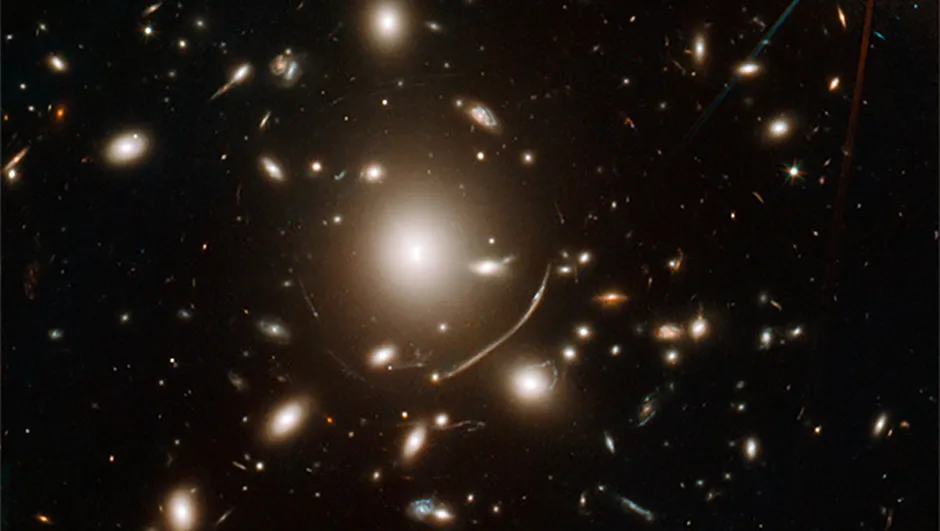A study of galaxy clusters has revealed that their brightest galaxies ‘wobble’, which could have implications for the current understanding of dark matter.Galaxy clusters are collections of up to a thousand galaxies that often form as a result of violent mergers.
At the centre of galaxy clusters lies a dense core that contains a massive galaxy, known as the brightest cluster galaxy (BCG).
Once a galaxy cluster returns to a relaxed state after a merger, it is thought that the BCG is held in place by the gravitational influence of dark matter.
Dark matter is an invisible substance thought to make up over 25 per cent of all matter in the Universe.
It cannot be directly observed, but scientists can infer its existence from the effect it has on the visible matter in the Universe.
A team of astronomers used the Hubble Space Telescope to study ten different galaxy clusters.
They found that the BGCs were not fixed at the centre, as expected.
In fact, Hubble data revealed that the centre of the visible parts of each cluster and the centre of the total mass of the cluster were offset by as much as 40,000 lightyears.
The team behind the study were able to analyse the galaxy clusters because they also act as gravitational lenses.
This means that they are so massive, they warp spacetime.
Light from distant objects is distorted as it passes through the clusters, and this effect can be used to make a map of the dark matter associated with the cluster.

Scientists can then work out the centre of mass and thus calculate whether the BGC is offset from the centre.
If the wobbling spotted during the study is a result of the effects of dark matter, it could only be explained if dark matter particles can interact with each other.
This would cause a rethink on the current understanding of dark matter.
Co-author of the study Frederic Courbin at EPFL in Switzerland says:
“We’re looking forward to larger surveys — such as the Euclid survey — that will extend our dataset.
Then we can determine whether the wobbling of BGCs is the result of a novel astrophysical phenomenon or new fundamental physics.
Both of which would be exciting!”
